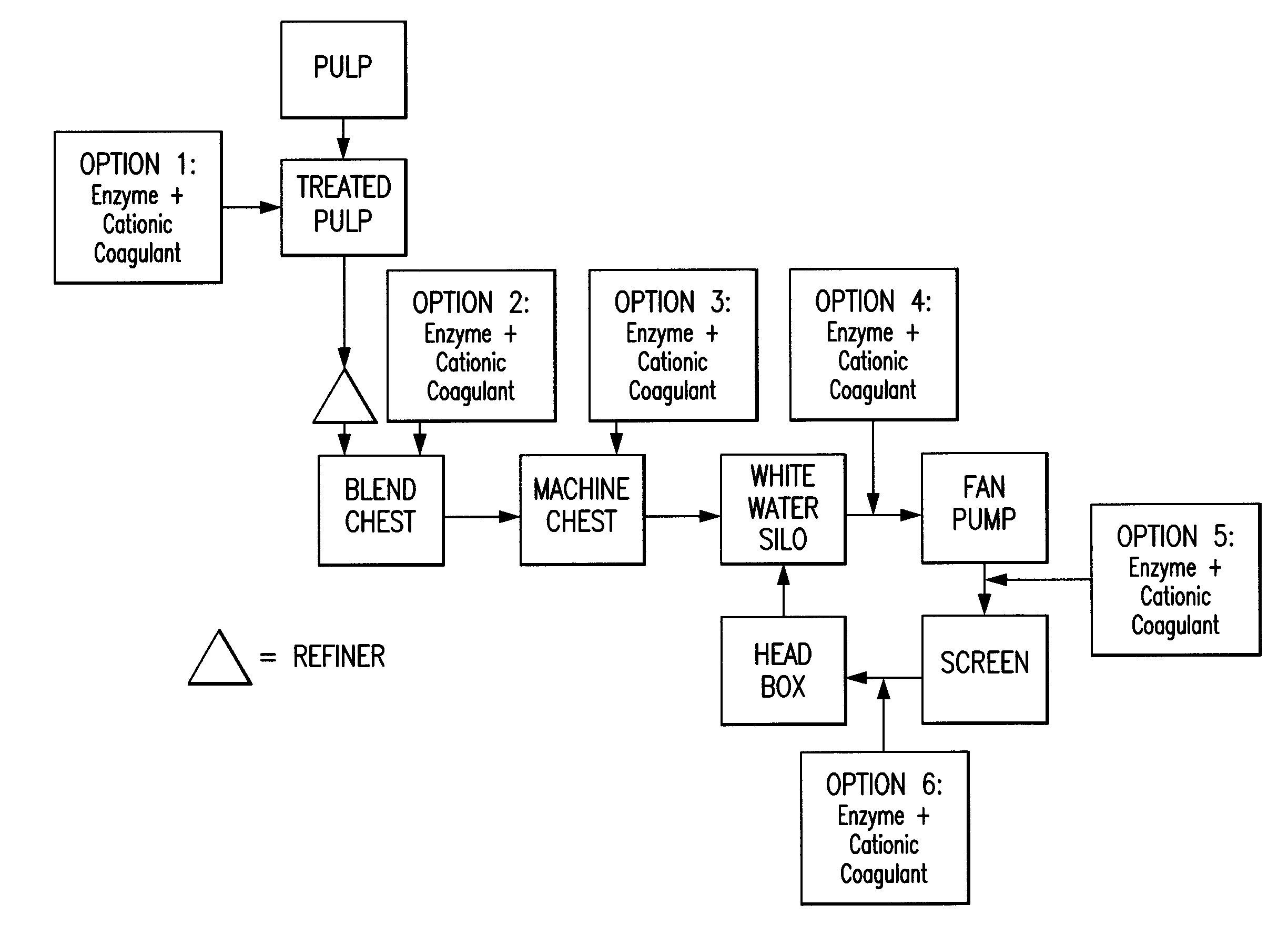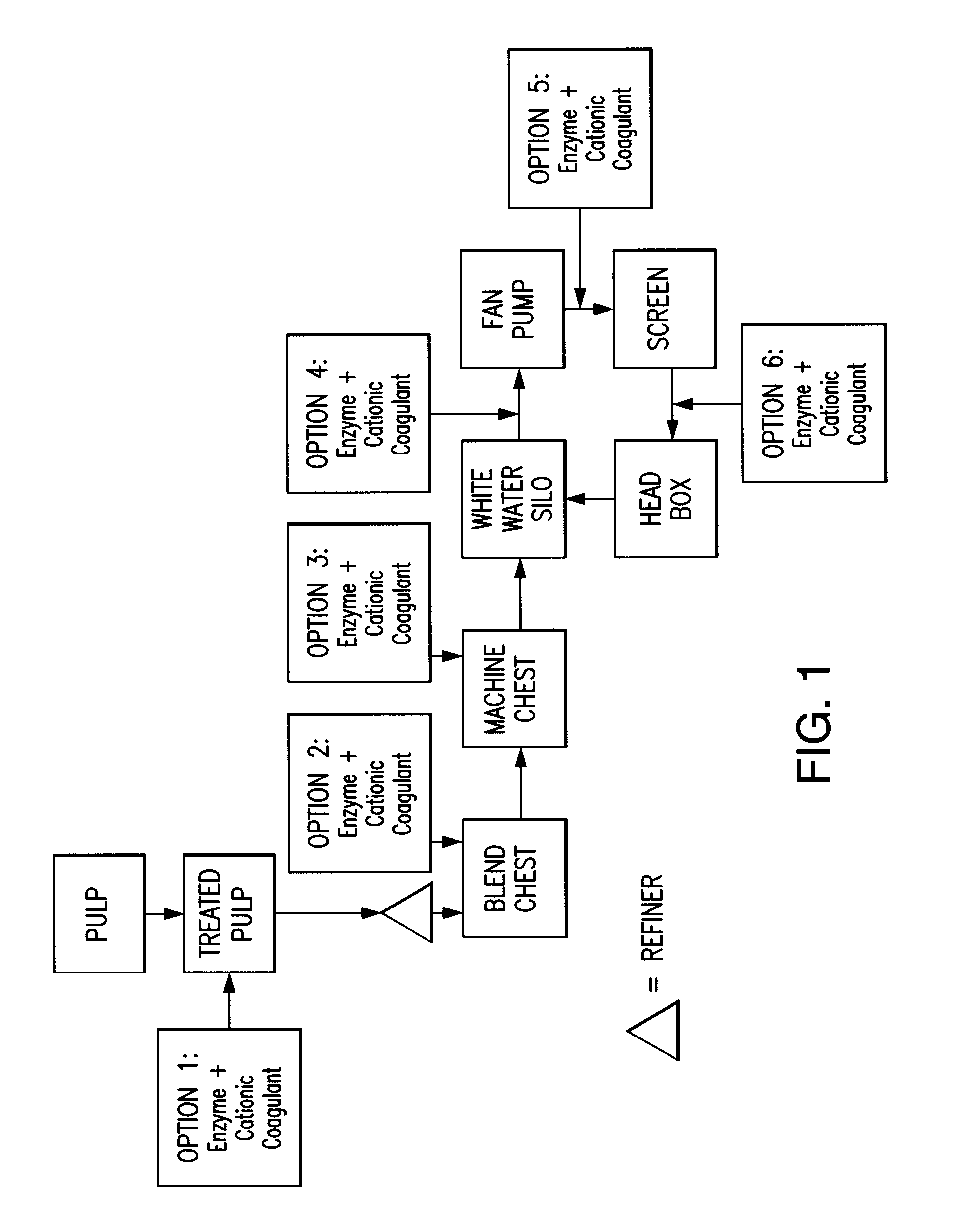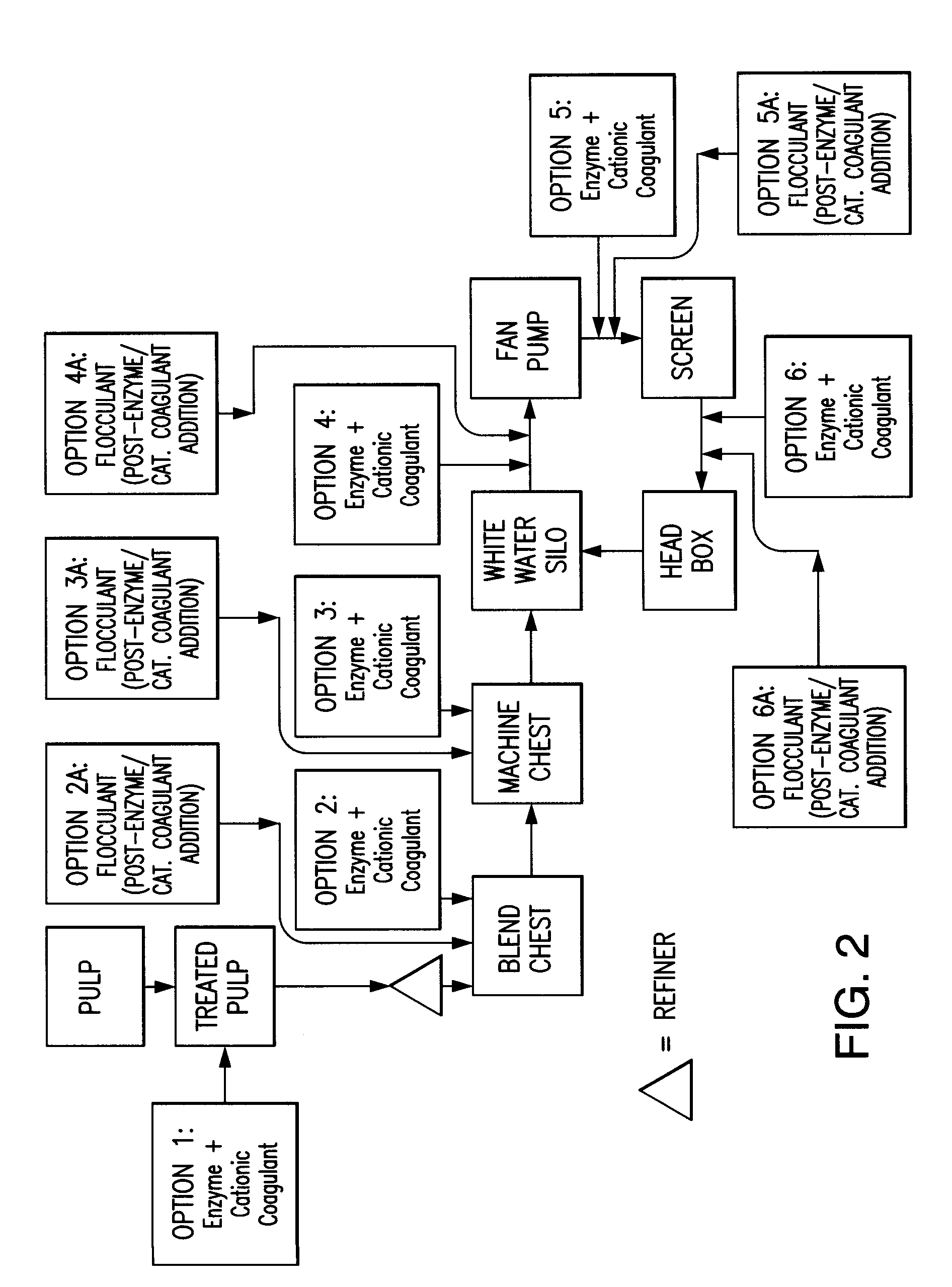Paper Making Processes and System Using Enzyme and Cationic Coagulant Combination
a technology of cationic coagulant and paper making process, which is applied in the field of paper making process and system, can solve the problems of increased production cost, increased energy consumption and equipment installation, and high cost of enzymes, and achieves the effect of improving cellulosic pulp drainage and/or retention
- Summary
- Abstract
- Description
- Claims
- Application Information
AI Technical Summary
Benefits of technology
Problems solved by technology
Method used
Image
Examples
example 1
[0105]The drainage and retention properties of compositions exemplifying the present invention were examined.
Experimental
[0106]The following materials and protocols were used for the experiments.
Pulp Furnish:
[0107]Refined OCC pulps and white water were obtained from linerboard manufacturers, such as Sonoco, Richmond, Va. and International Paper, Valliant Okla., as CSF 220, CSF 410, and as CSF 330. Newsprint furnish and white water were obtained from a Newsprint paper manufacturer, such as Catalyst, Snowflake, Ariz., as CSF 50.
Chemicals and Dosages:
[0108]Cationic coagulant used for the experiments was a low molecular weight cationic polyamine (BUFLOC® 5031, Buckman Laboratories International, Inc.), and a typical dosage was 1.5 lb / ton (dry solids basis) for OCC furnish and 4.0 lb / ton (dry solids basis) for Newsprint. The flocculant was a polyacrylamide (BUFLOC® 5511, Buckman Laboratories International, Inc.), and was used at a typical dosage of 0.2 lb / ton (dry solids basis) for the t...
example 2
[0114]The drainage and retention properties of additional compositions exemplifying the present invention were examined.
Experimental
[0115]The following materials and protocols were used for the experiments.
Pulp Furnish:
[0116]Refined OCC pulp was obtained from a linerboard manufacturer, such as Sonoco, Richmond, Va., as CSF 220.
Chemicals and Dosages:
[0117]Cationic coagulant used for the experiments was BUFLOC® 5031 (Buckman Laboratories International, Inc.), and the dosage was 1.5 lb / ton (dry solids basis) for OCC furnish. The flocculant was BUFLOC® 5511 (Buckman Laboratories International, Inc.), and was used at a dosage of 0.2 lb / ton (dry solids basis) for the tests. The selected enzyme was NOVOZYM® 51081 from Novozymes at a dosage of about 1 wt %. Enzyme was premixed with cationic coagulant before applying it to pulp at designed addition levels.
Testing Procedure:
[0118]The testing procedure used was similar to that used in Example 1.
Results
[0119]Table 7 shows results for the effect...
example 3
[0120]The drainage and retention properties of additional compositions exemplifying the present invention were examined.
Experimental
[0121]The following materials and protocols were used for the experiments.
Pulp Furnish:
[0122]Refined OCC pulp was obtained from a linerboard manufacturer, such as Sonoco, Richmond, Va., as CSF 220.
Chemicals and Dosages:
[0123]Cationic coagulants used for the experiments were low molecular cationic polyamine (BUFLOC® 5031, Buckman Laboratories International, Inc.), polyamidoamine-glycol (BUFLOC® 597, Buckman Laboratories International), and low molecular weight cationic polyamine (BUFLOC® 5551, Buckman Laboratories International, Inc.). The coagulant dosage was 1.5 lb / ton (dry solids basis). The flocculant was a polyacrylamide (BUFLOC® 5511, Buckman Laboratories International, Inc.), and was used at dosage of 0.2 lb / ton (dry solids basis) for all tests. The selected enzyme was NOVOZYM® 51081 from Novozymes. Enzyme was premixed with coagulant before applyi...
PUM
| Property | Measurement | Unit |
|---|---|---|
| Temperature | aaaaa | aaaaa |
| Temperature | aaaaa | aaaaa |
| Temperature | aaaaa | aaaaa |
Abstract
Description
Claims
Application Information
 Login to View More
Login to View More - R&D
- Intellectual Property
- Life Sciences
- Materials
- Tech Scout
- Unparalleled Data Quality
- Higher Quality Content
- 60% Fewer Hallucinations
Browse by: Latest US Patents, China's latest patents, Technical Efficacy Thesaurus, Application Domain, Technology Topic, Popular Technical Reports.
© 2025 PatSnap. All rights reserved.Legal|Privacy policy|Modern Slavery Act Transparency Statement|Sitemap|About US| Contact US: help@patsnap.com



